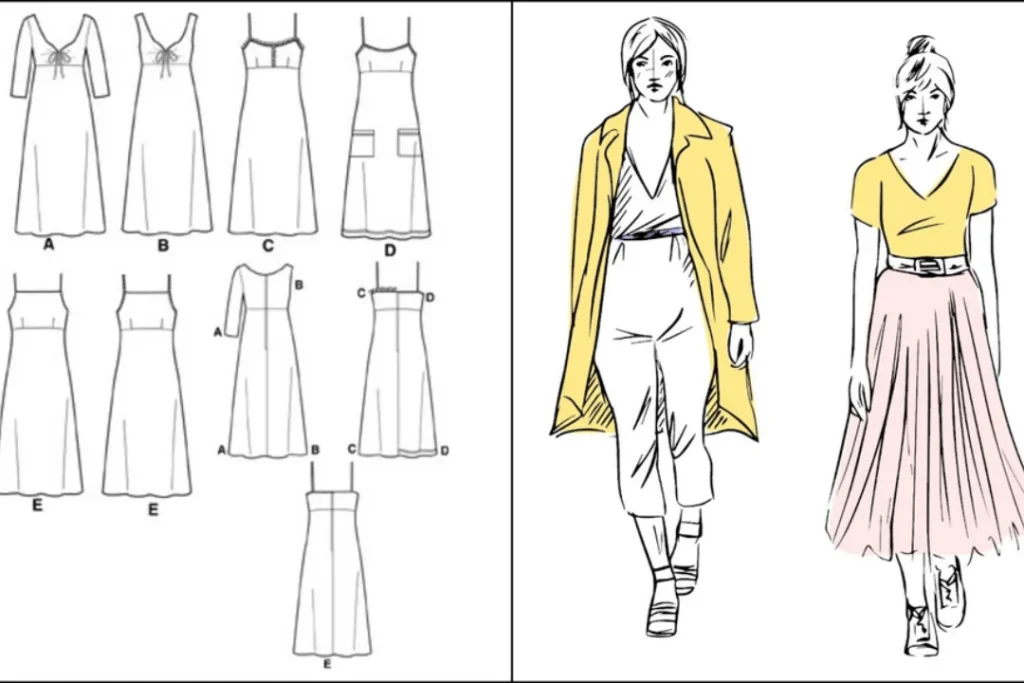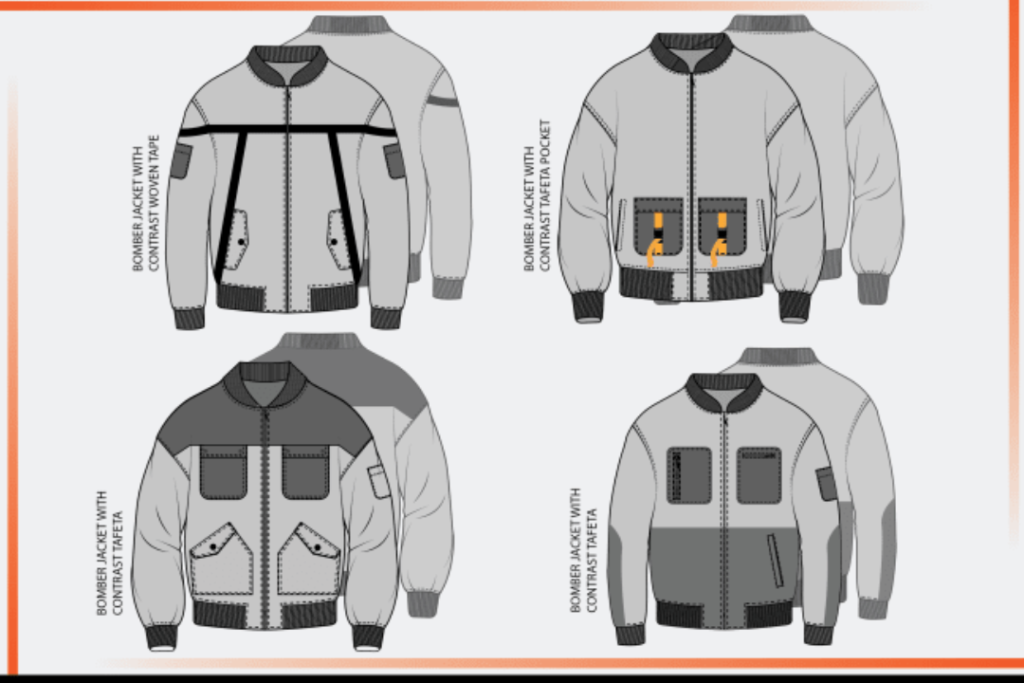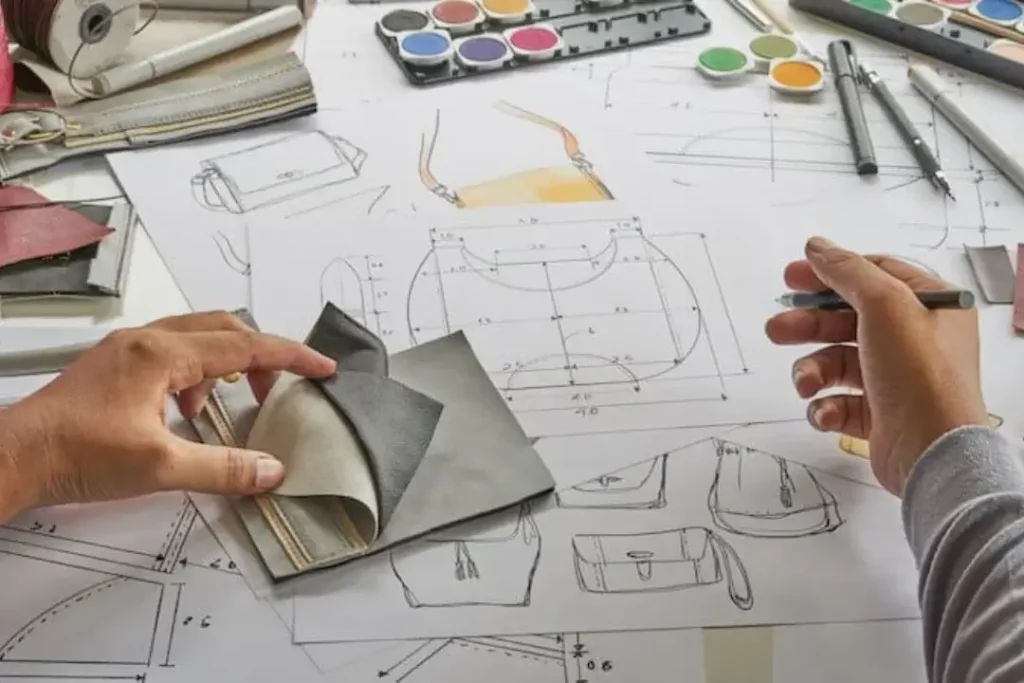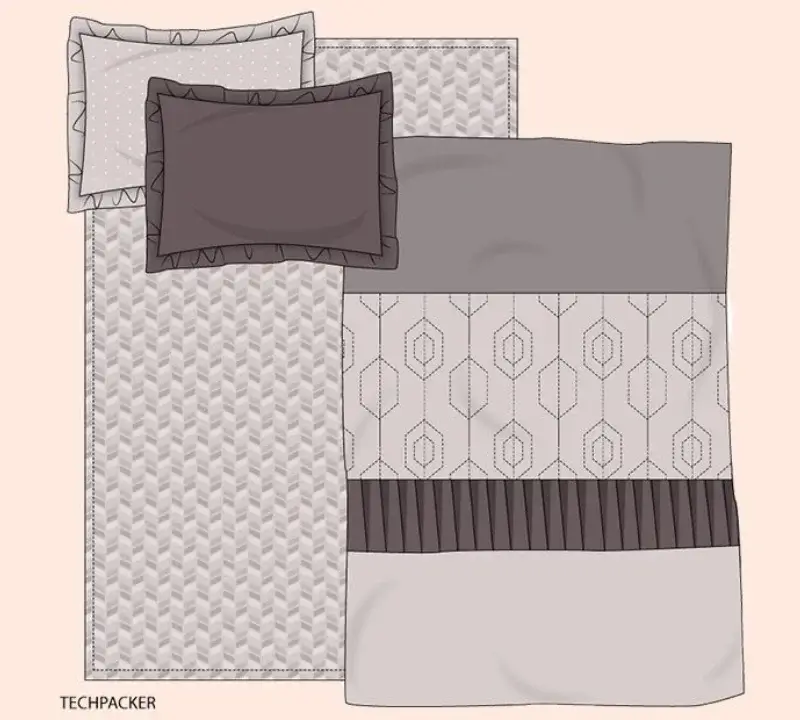
Why Clothing Brands Fail
Top Different Types of Shirts for Women and Men Top Different Types of Shirts for
Tech packs act as comprehensive documents that play a pivotal part in bringing a garment design to life
They are blueprints, containing all the important data like design particulars, materials, measurements, and manufacturing intricacies. Tech packs are intended to facilitate clear correspondence among designers and creation teams, guaranteeing exactness and consistency all through the assembling system. By serving as a broad guide for clothing creation, tech packs assist in streamlining processes, limit errors, and add to the effective production of your outstanding clothing. Whether you are a designer looking to take your vision successfully or a producer searching for accurate instructions for creation, understanding the importance of tech packs is pivotal in clothing fashion industry. In this comprehensive blog, let’s explore what are tech packs. And why they are fundamental in the world of style creation.
A tech pack is a comprehensive and very detailed document that comprises all the vital data for a garment’s creation . It incorporates specifications, such as design sketches, estimations, materials, colors, trims, labeling particulars, and production details. A tech pack serves as a blueprint that guides manufacturers in making the apparel specifically as designed by the designer.

Tech packs play a vital role in the fashion industry for multiple factors. They give clarity and consistency in communication between fashioners, makers, and different partners associated with the creation process. By detailing particular necessities and design components, tech packs guarantee that the end product meets the designer’s vision and quality standards.
The main advantage of developing our tech packs is their capability to streamline the fabrication process, saving both time and cost. By giving a clear roadmap for garment manufacturers, tech packs assist makers with staying away from damages and limit updates, prompting faster dispatch times and lessening creation costs.
Tech packs are important in precisely assessing the expense of garment creation. By determining materials, trims, and construction strategies in detail, tech packs permit makers to calculate creation expenses more accurately. This assurance that pricing statements given to clients are realistic and reflective of the genuine production costs.
Tech packs are fundamental tools for guaranteeing the legitimate fit and sizing of garments. By including detailed measurements and evaluating specifications, tech packs empower makers to make samples and final products that fulfill the ideal fit standards. This results in superior overall item quality and consumer loyalty.
Tech packs act as a reference point for sustaining consistency and quality control all through the creation process. By framing material particulars, development refinements, and completing strategies, tech packs help makers fulfill the desired quality standards and promise that each piece of clothing meets the designer’s assumptions.
Tech packs raise active collaboration among team members associated with the production process. By giving a unified document that imparts design data and creation needs, tech packs facilitate smooth communication and coordination between designers, pattern producers, sample sewers, and makers. This coordinated effort guarantees that everybody is lined up with the project goals and necessities, prompting a more effective and successful creation process.
Fashion flat sketches are detailed, two-layered drawings that exhibit an apparel design in a simplified and specialized way. Unlike fashion graphics, which concentrate on assigning the stylish allure and creative flair of a design, flat sketches offer an exact portrayal of the piece of clothing’s making subtleties, extents, and design components. These sketches ordinarily incorporate front, back, and side perspectives, alongside explanations specifying sewing, seams, pockets, terminations, and other primary highlights. Fashion flat sketches act as a visual blueprint for apparel creation, empowering design producers and makers to know the design idea and make precise patterns and samples.

The Bill of Materials (BOM) is an inclusive inventory list that organizes all the materials needed to deliver a particular garment. This document incorporates details, for example, fabric type and quantity, trims, buttons, zippers, marks, linings, and some other parts fundamental for developing the apparel. The BOM fills in as a basic tool for obtainment, creation arranging, and cost assessment. By determining the materials required for clothing style, including color varieties and sizes, the BOM supports precise obtaining, ordering, and stock management. It guarantees that the right materials are utilized in manufacturing, preserves consistency across batches, and works with effective correspondence between design, creation, and inventory network teams.
Garment measurement specifications give detailed estimations and measuring data for every component of apparel, including length, width, boundary, and extent. These particulars are vital for promising precise fit, steady sizing across various styles, and fulfilling quality standards. Commonly coordinated in a reasonable and organized design, garment measurement specs frame estimation focuses, resiliencies, evaluating rules, and size outlines. Fashioners utilize these details to impart their fit inclinations, while design producers and specialized creators depend on them to make precise samples and patterns. Garment measurement specs play a fundamental part in accomplishing a standardized fit, lessening fit issues, and upgrading consumer loyalty with the final product.
A garment cost sheet is a definite breakdown of all costs related to delivering a particular garment, from unrefined components and work expenses to overhead, bundling, and transportation costs. This document gives a comprehensive perspective on the cost structure for each piece of clothing style and assists businesses with working out the complete creation cost per unit. By analyzing cost components, for example, material expenses, trim expenses, work costs per activity, and other overhead costs, firms can decide the benefit of the item and make informed choices on pricing, sourcing strategies, creation techniques, and cost-saving opportunities. The garment cost sheet serves as a significant instrument for budgeting, cost control, pricing methodology improvement, and overall financial planning in the design business.
Developing a tech pack is an important part of the clothing creation process that includes making a detailed document containing all the essential data for makers to make a garment. Here are the steps involved in developing an inclusive tech pack:

It begins by illustrating the design idea and stylish intricacies of the garment. This incorporates design sketches, state-of-mind sheets, color samples, and motivations that catch the embodiment of the end product.
Give accurate measurement specifications for various sizes of the article of clothing. This incorporates detailed measurements for key regions like chest, waist, sleeve length, and inseam to guarantee steady measuring across all sizes.
Select the materials to be utilized in the apparel, including fabric type, creation, weight, variety, and any trims or embellishments. Giving fabric patterns and definite material portrayals helps producers in obtaining the right materials.
Set up a complete Bill of Materials listing the whole materials needed to create the garment. This incorporates quantities, suppliers, costs, and some other applicable finesse for every part of the apparel.
Indicate the arrangement of labels, care labels, brand tags, and any bundling prerequisites for the piece of clothing. Clear directions on branding and bundling guarantee that the end product satisfies branding and high-quality standards.
Give grading rules for scaling the apparel design up or down for various sizes. Incorporate a size graph and comprehensive grading rules to guarantee consistency and exact sizing across all sizes.
Incorporate any extra production notes, unique directions, or quality control necessities to direct makers in delivering the article of clothing as per the predetermined principles and quality assumptions.
Review the finished tech pack with all partners, including fashioners, design producers, and makers, to guarantee precision and clarity. Make any essential corrections based on feedback before finalizing the tech pack for creation.
The following examples give detailed insights into the components of tech packs for various garment types:
The tech pack for a men’s jacket features measurement particulars for key areas, for example, chest and sleeve length, material breakdown for the external fabric and covering, technical drawings of the jacket design, equipment refinements for buttons and zippers, alongside production notes for sewing methods and completions.

This tech pack model for a wrap dress incorporates broad measurements, fabric particulars, and development refinements for the wrap design, name placements, evaluating rules for various sizes, and particular creation notes for assembling the garment.
This tech pack for a women’s shoulder bag incorporates aspects for the bag size, material particulars for the outside and lining textures, production details for the shoulder strap and closure component, direction on label position, and any bundling necessities for the final product.

In this tech pack model for bed materials, you’ll find estimation specs for different bed sizes, texture details for the bed sheets and pillowcases, sewing guidelines for trims and creases, directions for care labels, and grading rules to keep up with size reliability across various sheet bedding sizes.

Tech packs are comprehensive documents that offer vital specifications for product making, usually utilized in the fashion industry. They hold important information such as measurements, materials, colors, and construction details, acting as a guide for manufacturers to perfectly make the product. In conclusion, this guide on “what are tech packs” has helped you understands how they serve as a dynamic tool in facilitating clear communication between designers and manufacturers, guaranteeing accurate execution of the product design and augmenting proficiency in the production process.
Tech packs are important as they give detailed specifications for product making, guaranteeing precision and consistency in the manufacturing process.
Tech packs are commonly created by designers or product designers to communicate the design details and supplies to manufacturers successfully.

Top Different Types of Shirts for Women and Men Top Different Types of Shirts for

What You Must Know About Clothing Samples? Before You Produce a Single Garment: What You

How Much Does It Cost To Make a Hoodie A Complete Cost Breakdown for Custom

Discover the Types of Buttons Discover the Types of Buttons That Transform Style and Functionality
Most Recent Posts
Expert Custom Clothing Manufcaturer
Join our Mailing list!
Get all latest news, exclusive deals and updates.